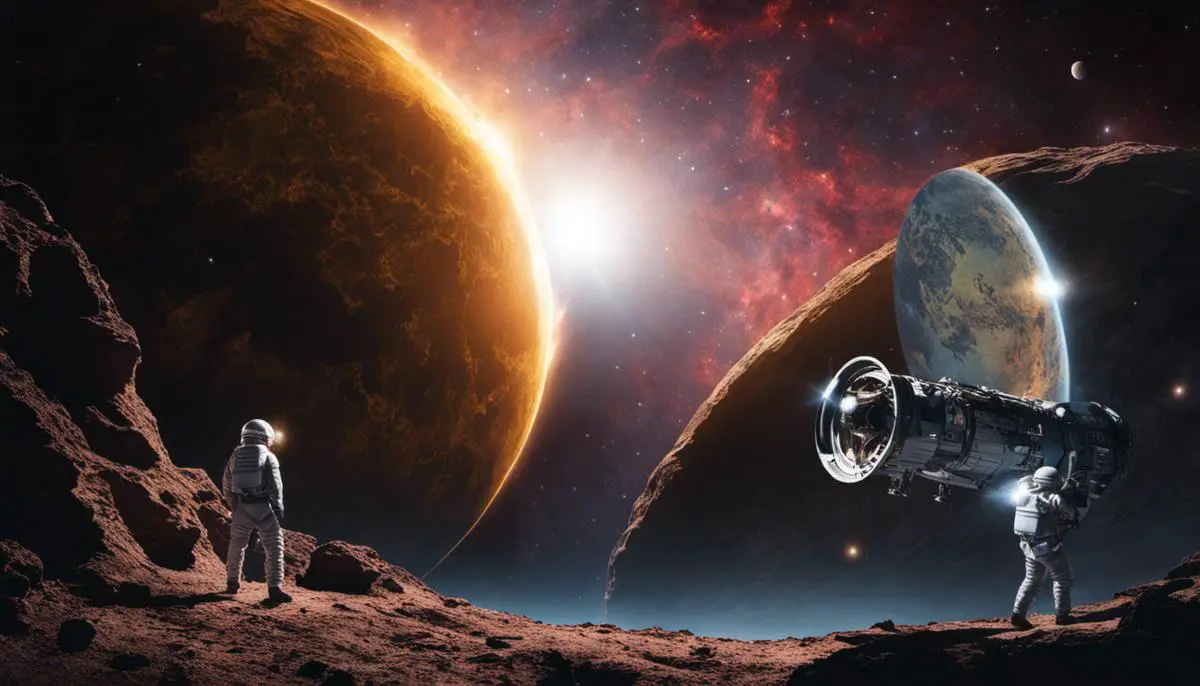Asteroids, celestial bodies shrouded in enigma, have long captivated the human imagination. Rising beyond the realms of wonder, NASA’s sample return missions, including monumental projects like ‘Genesis’, ‘Stardust’, and the ongoing ‘OSIRIS-REx’, embark on elucidating the mysteries veiled within the fragments of these ancient space wanderers. Proclaiming profound scientific implications, these missions promise possibilities ranging from unveiling the origins of our solar system to the inception of life. This discourse intends to delve into the intricacies of NASA’s historical, current, and potential future sample return missions, delineating the scientific rationale that drives them, the technological advancements aiding their success, and the implications steering our future.
Scientific rationale behind asteroid sample return missions
Title: A Stellar Journey: NASA’s Endeavor to Retrieve Asteroid Samples – The Fuel and the Advances in our Scientific Understanding
Fueling NASA’s quest to retrieve asteroid samples are a multitude of motivating factors, each intertwined with the compelling urge to push the boundaries of our collective knowledge and technological competencies. Yet, this quest goes beyond frontier-pushing engineering and redirects our gaze to the celestial bodies and the untapped wealth of knowledge they hold. The potential advancements in our scientific understanding stemming from studying asteroids are significant and multi-faceted.
Astrophysical curiosity is certainly the most blatant catalyst in this ambitious endeavor—an insatiable longing to decipher the mysteries engulfing our universe widens the scope of our astronomical research. Analyzing the soil and rock samples from asteroids provides a unique opportunity for direct observation, allowing scientists to disregard the variable effects presented by distant data collection. Therefore, asteroid sample return missions, such as NASA’s OSIRIS-REx mission, offer invaluable means to explore the very fabric of our cosmos.
Another driving force relates to the distinctive composition of asteroids, which could provide a glimpse into the early solar system. As generally accepted in the scientific community, asteroids are primordial remnants—unchanged since the early formation stages of our solar system. Gathering and examining these celestial artifacts will help shed light on the processes that led to the formation of planets and possibly life itself, thus deepening our comprehension of astrophysical phenomenology.
Equally as important, the quest to retrieve asteroid samples carries implications for potential mitigation strategies against future asteroid impact threats. The understanding gained from studying asteroid compositions, structures, and other properties will equip us with critical insights to devise methods of asteroid deflection, serving as a safeguard for our planet. It further underscores the necessity of continuous investment in such missions as they indirectly contribute to the longevity of life on Earth.
Lastsly, the exploration of the potential utilization of asteroid resources also acts as a significant propellant for the quest. The truth in the adage ‘necessity is the mother of invention’ resonates precisely with the current scenario of diminishing natural resources on Earth. Notably, asteroids are rich in precious metals and water—a key resource for the sustenance of life beyond Earth. Retrieving asteroid samples for resource extraction may therefore shape up as an intriguing answer to the growing demand for resources, further bolstering space exploration and colonization endeavors.
Undeniably, the quest to retrieve asteroid samples, fueled by myriad motivations, greatly advances our scientific understanding. Success also propels us towards the next epoch of space exploration, where asteroids are not only subjects of scientific inquiry but also potential protectors of our planet and sources of precious resources. With these factors combined, the quest to analyze asteroid samples may well become the new frontier of our ever-evolving scientific endeavors.
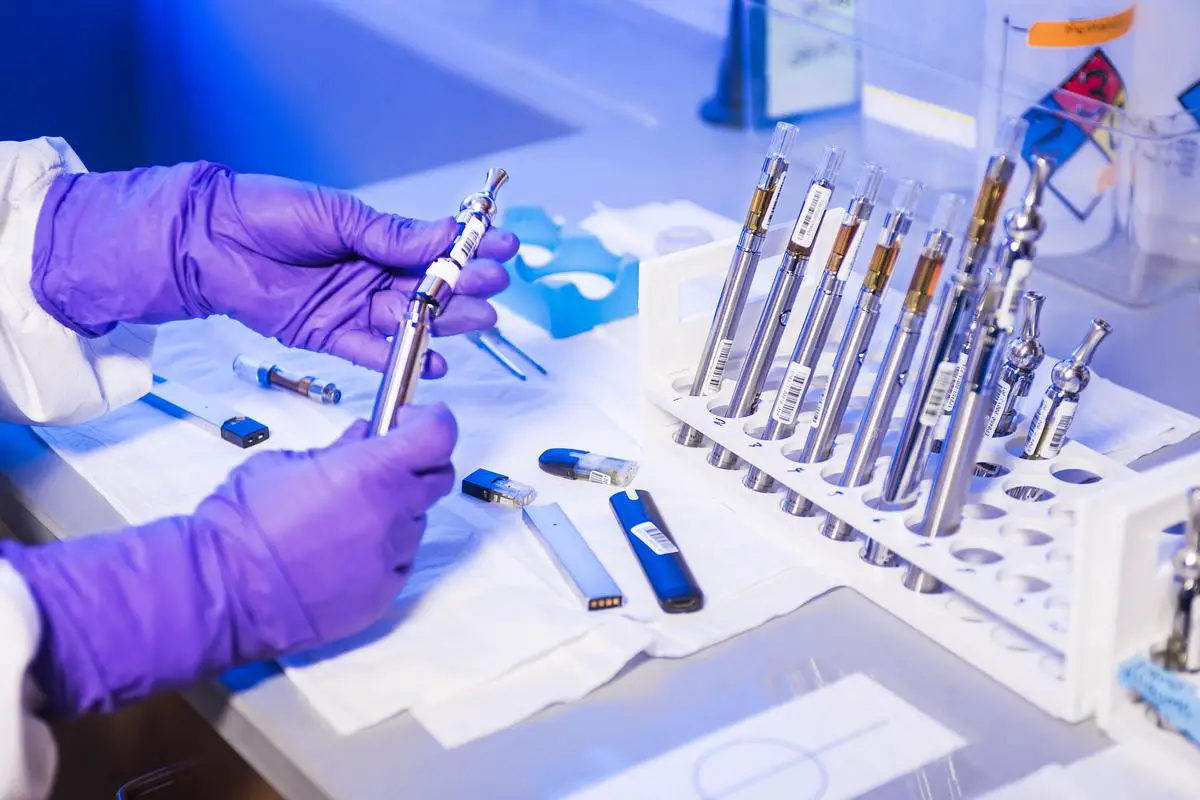
Historical And Current Sample Return Missions
Indeed, reflecting on the milestones and challenges faced by NASA in its historical and current asteroid sample return missions provides an enlightening perspective on the progress in space exploration.
Initiated in the late 1990s, NASA commenced its asteroid sample return endeavors with the historic Near Earth Asteroid Rendezvous (NEAR) mission. The craft, renamed NEAR Shoemaker in honor of pioneering planetary scientist Eugene Shoemaker, was the first to orbit an asteroid – Eros, a near-Earth asteroid. The NEAR Shoemaker managed not only to complete an extensive study of Eros, but also concluded its mission with a successful descent onto the asteroid’s surface in 2001, a feat that was not initially planned. Remarkably, this impromptu landing maneuver provided close-up images of the asteroid’s exterior, thus marking a significant milestone in asteroid exploration.
However, the NEAR mission was not without its trials. Initial attempts to orbit the asteroid in 1998 were unsuccessful. This setback, due to a software glitch, necessitated an additional year of cruise for the craft, illustrating the potential technological challenges linked to deep space explorations.
Following NEAR, NASA’s Stardust mission was embarked upon with the specific intent of returning asteroid samples. Launched in 1999, Stardust passed through the dust cloud of the comet Wild 2 in 2004, capturing particles. These samples, enclosed in an aerogel medium, were safely returned to Earth in 2006, providing invaluable insights.
Nevertheless, retrieving the Stardust samples was not a trivial task. The particles collected were incredibly minute and trapped within the aerogel at a high velocity. The extraction of these particles without contamination or damage presented a significant challenge, emphasizing the need for advanced terrestrial laboratory methods.
NASA’s current undertaking, the Osiris-Rex mission, is another major stride in asteroid sample return missions. Osiris-Rex launched in 2016 and, in late 2020, successfully collected samples from a near-Earth asteroid, Bennu. Promising to provide comprehensive material for extraterrestrial research, the magnitude of the collected sample surpassed expectations, but it also posed an immediate problem. The sample collection container’s lid got jammed by larger rock fragments, leading to particles escaping. This circumstance posed an unanticipated difficulty, demonstrating that even well-orchestrated missions may confront unforeseen hurdles.
Despite these trials, NASA’s determination has remained unfaltering. Each challenge overcome has led to substantial technological and practical advancements, enhancing our knowledge about asteroids and the vast universe beyond. As NASA continues to work towards its forthcoming asteroid sample return missions, increased understanding and potential breakthroughs await. There is no denying that these missions may present new challenges, but armed with lessons from the past and an unwavering spirit of exploration, we stand on the threshold of further astronomical revelations.
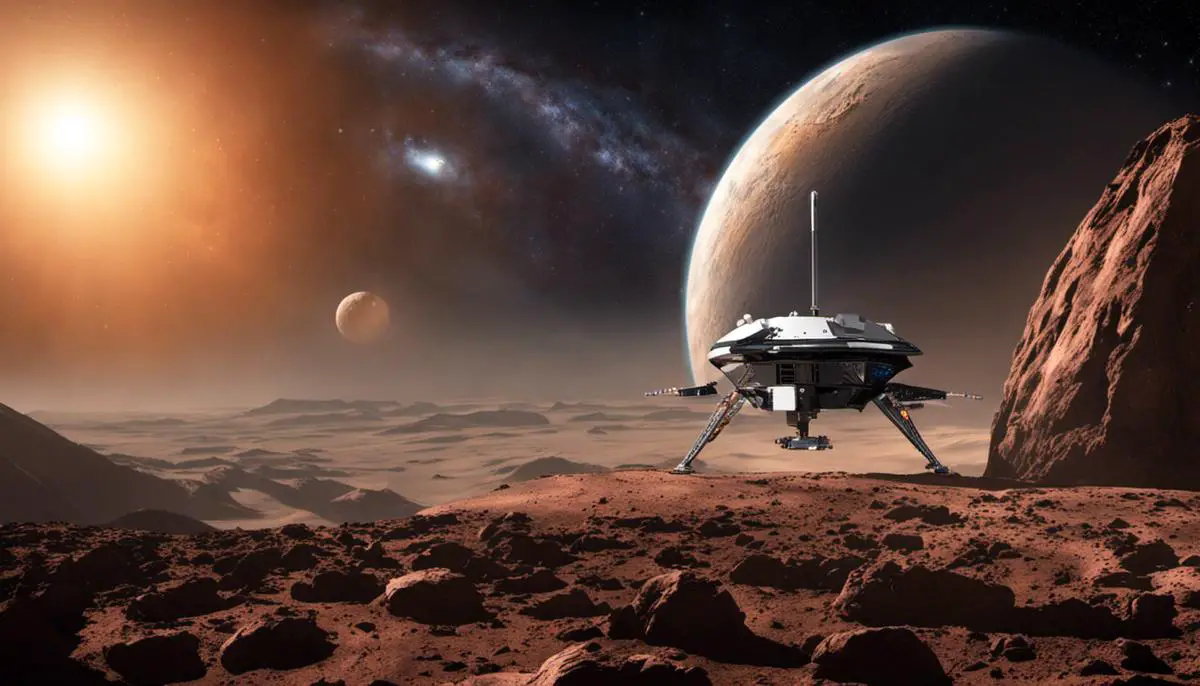
Technological Aspects of Sample Return Missions.
The accomplishments of NASA in implementing innovative technologies in their asteroid missions are profound examples of human propensity for resolve and groundbreaking exploration.
Notable technologies and problem-solving techniques have been utilized to overcome complex physical and logistical challenges associated with returning samples from asteroids.
Firstly, the Hayabusa mission, launched by JAXA, and supported by NASA, fundamentally redefined maneuvering technology in space.
A key technological breakthrough implemented in Hayabusa was an autonomous navigation system, capable of conducting simultaneous arrival, orbit control, landing rehearsals, and hover and retreat maneuvers.
Coupled with the LIDAR (laser altimeter), it elucidated the most feasible landing area with the smallest possible landing ellipses.
This potent combination led to an effectively addressed complication associated with landing on irregularly rotating bodies in microgravity conditions.
Secondly, NASA’s Dawn mission made compelling strides in engineering by adapting and leveraging ion propulsion.
This system endowed the probe with unprecedented ability to decelerate and change course, enabling it to embark on a multi-target journey, first to Vesta and later to Ceres – a feat unimaginable in the staid confines of traditional rocket propulsion.
Ion propulsion embodies an elegant solution to maximize thrust while conservatively managing the stringent fuel constraints inherent in these ambitious missions.
In addition, NASA pivoted on innovative techniques to solve the problem of sample collection, showcased splendidly in the OSIRIS-REx mission.
The Touch-And-Go Sample Acquisition Mechanism, or TAGSAM, is an ingenious device designed specifically for collecting samples from the ancient asteroid Bennu.
TAGSAM, armed with the ability to capture significant amount of material, bypassed the need for delicate and unpredictable landing.
Its design, a testament to ingenious problem-solving, revolutionized our approach to asteroid sample retrieval.
Moreover, NASA’s endeavors in asteroid missions herald the rise of miniaturized technology.
CubeSats, small, cube-shaped satellites, are becoming valued accomplices in these missions.
The INSPIRE (Interplanetary NanoSpacecraft Pathfinder In Relevant Environment) project, for instance, aims to test the functionality and durability of these tiny yet powerful satellites on deep-space missions.
In the near future, CubeSats, with their affordable manufacturing and launching costs, could become vital adjuncts in asteroid missions, tackling cost, size and weight challenges.
Furthermore, NASA’s Double Asteroid Redirection Test (DART) mission exemplifies an innovation in planetary defense strategy, in which a kinetic impactor technique will be employed to deter potential future asteroid impacts, thus opening a new frontier in asteroid mission technologies.
These multiple advancements in technology and innovative solutions not only allow for the successful collection and return of asteroid samples but promote the understanding of the universe.
NASA’s initiatives underscore an interminable quest for expanding horizons, probing deeper cosmic truths and leveraging technology to unravel the mysteries that the cosmos holds.
Moving forward, the marriage of scientific curiosity and technological advancements will undoubtedly unlock more pioneering strategies for exploring the final frontier.
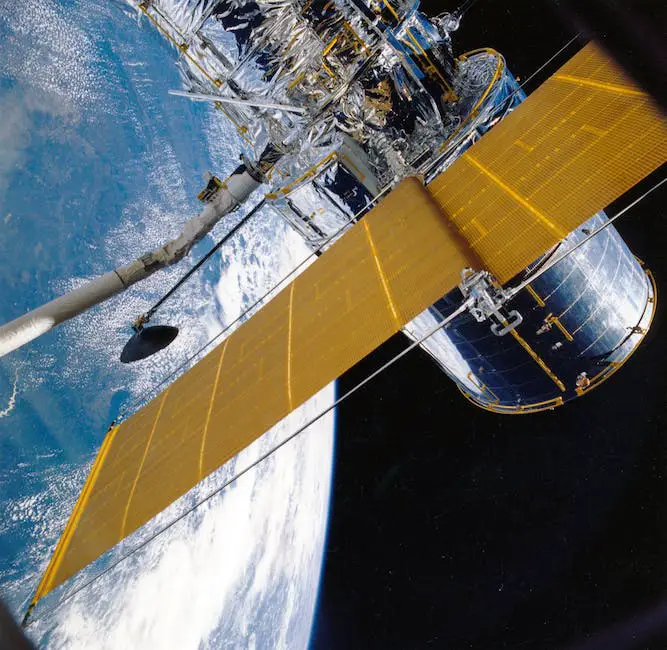
Potential future scenarios and implications.
In a continuous and tireless pursuit to understand the cosmos, space exploration organizations imbue their missions with unique and progressively advanced technologies. As NASA expands its scope of exploration, sample return missions designed to fetch asteroid specimens may borrow from the realm of artificial intelligence and robotics, incorporate advances in propulsion technology, and foster improved payload designs – all serving to facilitate the collection, containment, and return of pristine samples.
Artificial Intelligence (AI) has the potential to become an invaluable ally in future asteroid missions. Machine learning can be perhaps leveraged to predict, analyze, and mitigate the difficulties associated with navigating and interacting with a moving cosmic body. The AI, trained on countless simulations and past mission data, could potentially drive missions independently, and with more efficiency, enabling landers to resiliently respond to unexpected events and morphologies of celestial bodies, thereby optimizing sample collection.
Space missions may also embrace advances in propulsion systems, possibly involving more efficient fuel cells or solar sail technology. Iterative advancements in propulsion may allow spacecraft to reach farther asteroids with greater speed, essentially broadening the catalog of accessible targets for sample return endeavors. The application of fuel-efficient propulsion methodologies such as solar sails, can tremendously increase mission durations while lowering costs.
Novel sample collection systems may come to the fore, offering both variety and precision in the extraction process. Future missions could deploy robotics and micro-robot technology that may enhance the volume and variety of retrieved samples while minimizing contamination, thus extending the range of analyses that can be conducted upon the samples’ return.
On a broader scale, the drive for asteroid sample return missions can lead to innovations in spacecraft design, essentially facilitating greater mission adaptability and interoperability. Incorporating miniaturized technology such as CubeSats could facilitate flexible mission designs, offering the potential for cooperative or distributed sampling strategies which could widen the range of exploration and the diversity of collected materials.
Complementing the defense strategies against potential asteroid impacts, NASA’s Double Asteroid Redirection Test (DART) mission serves as a forerunner for planetary defense technology. The kinetic impactor approach of DART, if successful, could provide vital insights into improving the techniques of altering an asteroid’s trajectory. Such knowledge may prove imperative in safeguarding our planet in the future, underscoring the significance of the broader implications of these missions.
In this context of relentless scientific progression, the accelerated pace of such ambitious missions is a testimony to the burgeoning fillip of curiosity to comprehend the universe. As advancements continue to evolve, asteroid sample return missions may become not just an insightful endeavor of astronomical proportions but a gateway venturing into untouched realms of the cosmos. Although the path is fraught with uncertainties, it echoes an unfailing commitment to understanding our solar system and beyond – a testament to the indomitable human spirit and relentless hunger for knowledge.
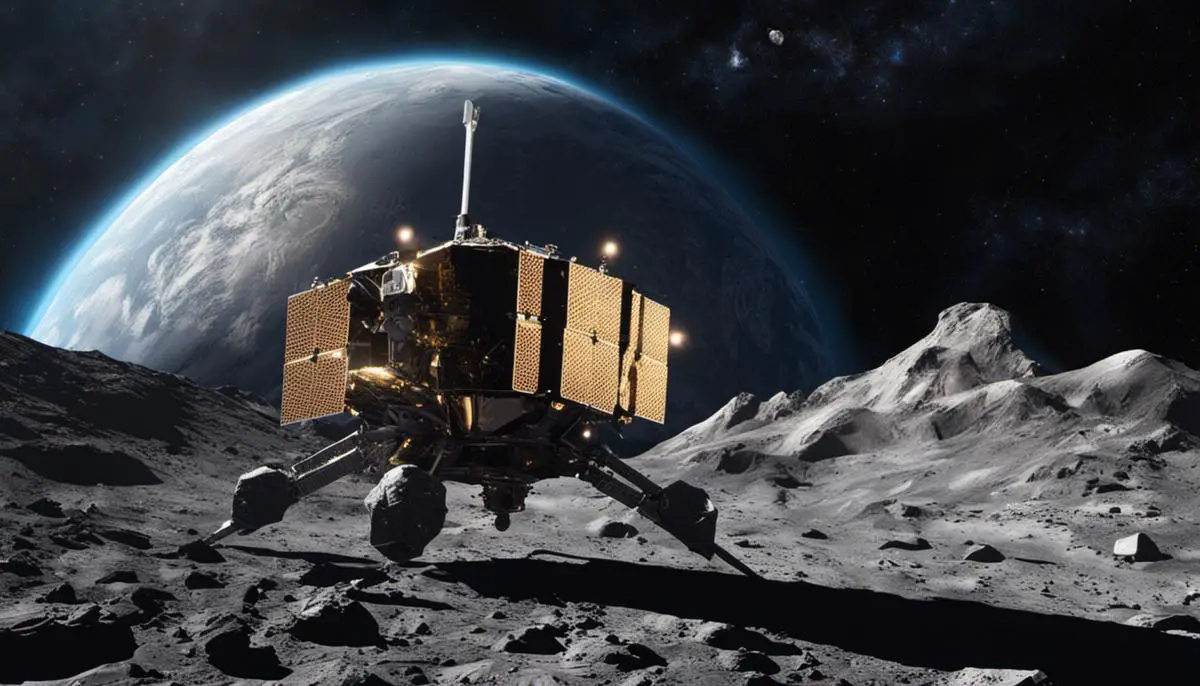
As the saga of NASA’s asteroid sample return missions unrolls, the amassed knowledge and technological mastery underscore a dawn of exploration and understanding. The remnants of these celestial sentinels, cradling answers to some of humanity’s profound queries, also glimpse future prospects. With asteroid mining potentially disrupting the global economy, contributions to planetary defense mitigating cosmic threats, and fostering international cooperation, we stand on the brink of a new era in space exploration. Thus, as we crest the wave of this cosmic sojourn, our grasp on the mysteries of the universe tightens, and the surreal apparitions over our heads inch ever closer to understanding.
![]()
